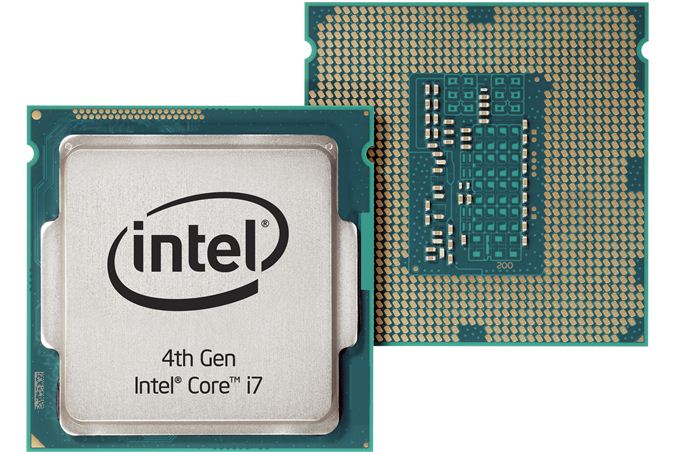Intel's Haswell - An HTPC Perspective: Media Playback, 4K and QuickSync Evaluated
by Ganesh T S on June 2, 2013 8:15 PM EST
Over the last two years, the launch of every major desktop CPU family from both AMD and Intel has been accompanied by a dedicated HTPC-oriented article. This coverage has been complementary to Anand's extensive analysis from a general computing perspective. Haswell will be no different. The advancements made from Llano to Trinity and from Sandy Bridge to Ivy Bridge had rendered entry level platforms good enough for casual / mainstream HTPC users. Advanced users still require discrete GPUs for using some video renderers and obtaining accurate display refresh rates. Each vendor has their own quirks when it comes to driver features and stability. This has made it difficult to declare any one solution as the perfect HTPC platform. Intel has hyped up improved GPU performance in the lead up to Haswell.
Has Intel improved the GPU performance and video-centric features enough to make discrete GPUs redundant for HTPCs? More importantly, how much of an improvement do we have over the HD4000 in Ivy Bridge? This question will be looked at from multiple angles in the course of this review. We will determine whether the shortcomings of Ivy Bridge (rendering benchmarks and refresh rate support, primarily) have been addressed. Also of importance are the HTPC configuration options, stability and power efficiency.
In this review, we present our experience with low-power desktop Haswell as a HTPC platform. We have listened to feedback from our earlier HTPC reviews at launch time and made efforts to source a low power CPU suitable for HTPC duties. In earlier HTPC reviews put out at launch time, we used the highest end CPU sampled by Intel / AMD. This time around, thanks to ASRock, we managed to get hold of an Intel Core i7-4765T CPU along with their mini-ITX motherboard, the Z87E-ITX.
In the first section, we tabulate our testbed setup and detail the tweaks made in the course of our testing. A description of our software setup and configuration is also provided. Following this, we cover the video post processing options provided by the Intel drivers. A small section devoted to the custom refresh rates is followed by some decoding and rendering benchmarks. No HTPC solution is completely tested without looking at the network streaming capabilities with respect to some of the popular OTT (over-the-top) services. 4K is the next major upgrade stop for the casual HTPC user. Haswell does have 4K display support and we will have a dedicated section to see how well it works. We are finally at a point where GPU encoders have become stable and popular enough for mainstream open source projects to utilize. A section is devoted to Handbrake's integration of QuickSync capabilities. In the final section, we cover miscellaneous aspects such as power consumption and then proceed to the final verdict.










95 Comments
View All Comments
heffeque - Monday, June 3, 2013 - link
Well... the AMD A4-5000 seems to be perfect for HTPC and I don't see in this comparison.Why not try comparing what the AMD A4-5000 can do (4k, 23Hz, etc) versus this Haswell system?
The CPU isn't that good, but there's no need for much CPU on HTPC systems, and also... the price, just look at the price.
meacupla - Monday, June 3, 2013 - link
when you playback hi10 or silverlight content, having a fast cpu helps immensely, since those formats don't have dxva support.halbhh2 - Tuesday, June 4, 2013 - link
Consider prices, at $122 suggested, the new A10 6700 is going to be interesting as the real competition to this Intel chip.majorleague - Wednesday, June 5, 2013 - link
Here is a youtube link showing 3dmark11 and windows index rating for the 4770k 3.5ghz Haswell. Not overclocked.This is apparently around 10-20fps slower than the 6800k in most games. And almost twice the price!!
Youtube link:
http://www.youtube.com/watch?v=k7Yo2A__1Xw
JDG1980 - Monday, June 3, 2013 - link
You can't use madVR on ARM. And most ARM platforms are highly locked down so you may be stuck with sub-par playback software from whoever the final vendor is.HisDivineOrder - Tuesday, June 4, 2013 - link
Because we don't live in next year, Doc Brown?BMNify - Wednesday, June 12, 2013 - link
for the same reason that QS isn't being used far more today, that being Intel and arm devs talk the talk but don't listen to or even stay in contact with the number one video quality partners ,that being the x264 and ffmpeg devs and provide their arm patches for review and official inclusion in these two key Cecil app code bases to actually use the arm/intel Low Level video encode/decode API'sMrSpadge - Monday, June 3, 2013 - link
Use an i5 and the price almost drops in half. Then undervolt it a bit and each regular CPU will only draw 40 - 50 W under sustained load. Which media playback doesn't create anyway.Mayuyu - Sunday, June 2, 2013 - link
2-Pass encodes do not offer any improvements in compression efficiency in x264. The only time you would want to use a 2-Pass encode is to hit a certain file size.Quicksync is irrelevant because their h264 encodes are inferior in quality to xvid (which has been outdated for a long time now).
raulizahi - Thursday, August 29, 2013 - link
@Mayuyu, 2-pass x264 encodes using VBR do offer improvements in compression efficiency at the same video quality. I have proven it many times. An example: target 720p50 at 3Mbps VBR, first pass I get a certain quality, second pass I get noticeably better quality.